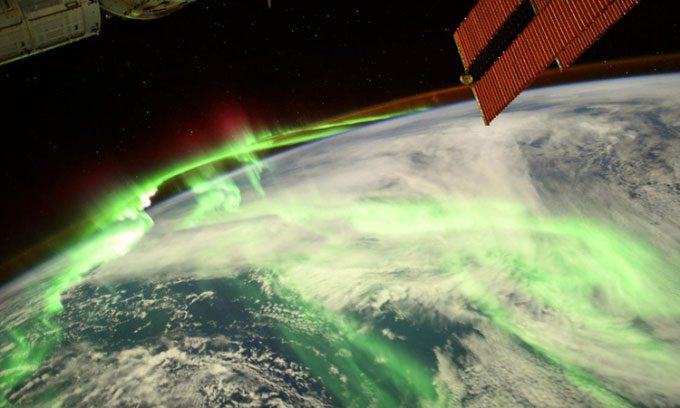NASA researchers have launched two rockets to Alaska to measure the wind, temperature, and density within the aurora borealis.
This program is led by astronomer Stephen Kaeppler from Clemson University. The two rockets are equipped with sensors aimed at the active auroral region. They intend to measure the wind, temperature, and plasma density within the aurora.

Aurora on Earth as seen from the International Space Station.
The dancing lights of the aurora form when charged particles from space collide with molecules in Earth’s upper atmosphere. These collisions increase the energy of electrons in atmospheric molecules, causing the electrons to orbit their nuclei at higher energy states.
As the electrons return to their original energy states, they release a photon, or light particle, during this process. These photons create the shifting curtains of green, purple, and red seen at polar latitudes.
Kaeppler and his team are interested in the boundary between neutral gas in the atmosphere and plasma, or charged gas, which is becoming increasingly prevalent in the upper atmosphere. The molecular disturbance of the aurora disrupts the boundary layer between neutral gas in the lower atmosphere and plasma in the higher atmosphere. This disturbance leads to friction, allowing researchers to measure its temperature.
An animated concept image shows electrons moving along Earth’s magnetic field lines, colliding with particles in Earth’s atmosphere to activate the aurora.
The first rocket released colorful vapor trails as it ascended to an altitude of 299 km. These vapors, similar to the chemicals that make fireworks colorful, drifted in the atmosphere, enabling researchers to trace the wind patterns.
The subsequent rocket was designed to reach a maximum altitude of 201 km to carry temperature and density measuring devices within the aurora. The rockets fell back to Earth shortly after performing their measurements.


















































